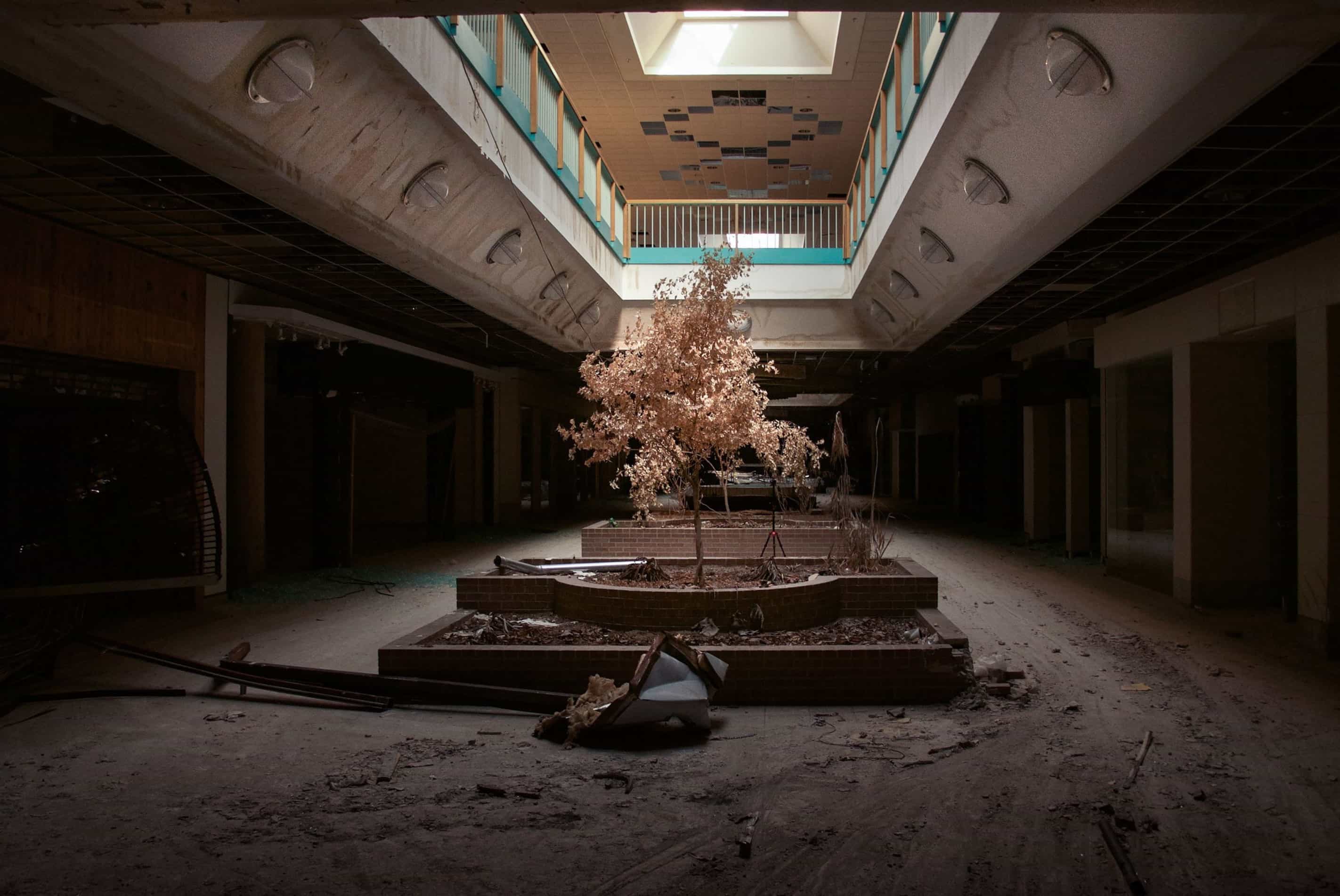
Why are abandoned malls so fascinating? These once-bustling centers of commerce now stand as eerie reminders of a bygone era. Abandoned malls captivate our imagination with their haunting beauty and stories of economic shifts. From the rise of online shopping to changing consumer habits, many factors contribute to these retail giants' decline. Exploring these empty spaces, one can almost hear the echoes of footsteps and bustling crowds. Urban explorers and photographers often find these locations perfect for capturing the passage of time. Whether you're intrigued by architecture, history, or the sheer mystery, abandoned malls offer a unique glimpse into the past.
Key Takeaways:
- The Rise and Fall of Malls: Malls were once bustling social hubs, but online shopping and changing habits led to their decline, impacting jobs and communities.
- Architectural Marvels and Nostalgia: Abandoned malls leave behind impressive structures and nostalgic memories, but repurposing challenges and environmental concerns pose significant obstacles.
The Rise and Fall of Malls
Shopping malls were once the epicenters of social life and commerce. However, many have become ghostly reminders of a bygone era. Let's explore some fascinating facts about abandoned malls.
-
The First Enclosed Mall: The first enclosed mall in the U.S. was Southdale Center in Edina, Minnesota, opened in 1956. It set the stage for the mall boom.
-
Peak Popularity: Malls reached their peak in the 1980s and 1990s, with over 1,500 malls across the United States.
-
Decline Begins: The decline started in the early 2000s due to the rise of online shopping and changing consumer habits.
-
Dead Malls: A "dead mall" is a shopping center with a high vacancy rate or low consumer traffic. Many have been abandoned entirely.
-
Economic Impact: The closure of malls affects local economies, leading to job losses and decreased property values.
Architectural Marvels Left Behind
Abandoned malls often leave behind impressive structures. These buildings tell stories of architectural ambition and changing times.
-
Massive Spaces: Some abandoned malls cover over a million square feet, like the Randall Park Mall in Ohio.
-
Unique Designs: Many malls featured unique architectural designs, from glass ceilings to elaborate fountains.
-
Repurposing Challenges: The large, open spaces of malls make repurposing difficult, often requiring significant investment.
-
Environmental Concerns: Abandoned malls can become environmental hazards, with issues like mold, asbestos, and vandalism.
-
Urban Exploration: These sites attract urban explorers who document the decay and beauty of these forgotten places.
Cultural Impact and Nostalgia
Malls were more than just shopping centers; they were cultural hubs. Their abandonment has left a nostalgic void for many.
-
Social Hubs: Malls were once the go-to places for socializing, especially for teenagers.
-
Pop Culture: Malls have been featured in numerous movies, TV shows, and music videos, cementing their place in pop culture.
-
Mall Rats: The term "mall rats" refers to teenagers who spent a lot of time hanging out in malls.
-
Holiday Memories: Many people have fond memories of holiday shopping and events at malls.
-
Ghost Malls: Some abandoned malls are rumored to be haunted, adding to their eerie allure.
Economic and Social Consequences
The abandonment of malls has far-reaching economic and social consequences. These impacts are felt by communities and individuals alike.
-
Job Losses: The closure of malls leads to significant job losses, affecting retail workers and mall staff.
-
Community Decline: Malls often served as community centers, and their closure can lead to a decline in community engagement.
-
Retail Apocalypse: The term "retail apocalypse" describes the widespread closure of brick-and-mortar stores, including malls.
-
Shift to E-commerce: The rise of e-commerce has been a major factor in the decline of traditional malls.
-
Changing Consumer Habits: Consumers now prefer experiences over shopping, leading to the rise of lifestyle centers and mixed-use developments.
Repurposing and Revitalization Efforts
Despite the challenges, some abandoned malls have found new life through repurposing and revitalization efforts.
-
Mixed-Use Developments: Some malls have been transformed into mixed-use developments, combining residential, commercial, and recreational spaces.
-
Educational Institutions: A few abandoned malls have been repurposed as schools or universities, providing much-needed space for education.
-
Healthcare Facilities: Some malls have been converted into healthcare facilities, including hospitals and clinics.
-
Community Centers: Repurposing malls as community centers can help revitalize neighborhoods and provide valuable services.
-
Indoor Farms: Innovative projects have turned abandoned malls into indoor farms, addressing food security issues.
Famous Abandoned Malls
Certain abandoned malls have gained fame due to their size, history, or unique stories. These malls have become icons of a bygone era.
-
Randall Park Mall: Once the largest mall in the world, Randall Park Mall in Ohio closed in 2009 and was demolished in 2014.
-
Dixie Square Mall: This Illinois mall gained fame as a filming location for "The Blues Brothers" before closing in 1978.
-
Rolling Acres Mall: Known for its eerie, decaying state, Rolling Acres Mall in Ohio closed in 2008 and was demolished in 2017.
-
Hawthorne Plaza: This California mall has been used as a filming location for numerous movies and TV shows since its closure in 1999.
-
New World Mall: Located in Bangkok, this mall was abandoned after a fire in 1999 and became famous for its flooded lower levels, which turned into a fish habitat.
The Future of Malls
The future of malls remains uncertain. While some are being repurposed, others continue to decay. What lies ahead for these once-bustling centers?
-
Virtual Shopping: The rise of virtual shopping experiences could further impact the future of physical malls.
-
Sustainability: Future mall designs may focus on sustainability and adaptability to changing consumer needs.
-
Experiential Retail: Malls that survive may shift towards offering unique experiences rather than just shopping.
-
Community Integration: Successful malls of the future may integrate more closely with their surrounding communities.
-
Technological Innovations: Advances in technology, such as augmented reality and smart infrastructure, could shape the future of malls.
The Last Word on Abandoned Malls
Abandoned malls tell fascinating stories. They show how shopping habits have changed over time. Once bustling centers of commerce, these places now stand silent, echoing past glories. Some have found new life as community centers, schools, or even indoor farms. Others remain eerie reminders of a bygone era.
Exploring these spaces can be both thrilling and educational. They offer a unique glimpse into architectural styles and retail trends. Plus, they make for some pretty cool photo ops.
Whether you're a history buff, urban explorer, or just curious, abandoned malls have something to offer. They remind us that change is constant and that even the grandest structures can fall into disuse. So next time you pass by an empty mall, take a moment to appreciate its story. You might just see it in a whole new light.
Frequently Asked Questions
Was this page helpful?
Our commitment to delivering trustworthy and engaging content is at the heart of what we do. Each fact on our site is contributed by real users like you, bringing a wealth of diverse insights and information. To ensure the highest standards of accuracy and reliability, our dedicated editors meticulously review each submission. This process guarantees that the facts we share are not only fascinating but also credible. Trust in our commitment to quality and authenticity as you explore and learn with us.


